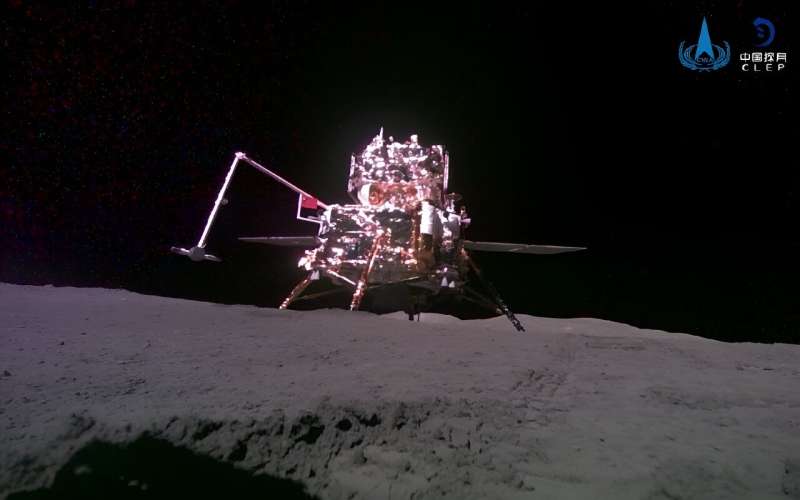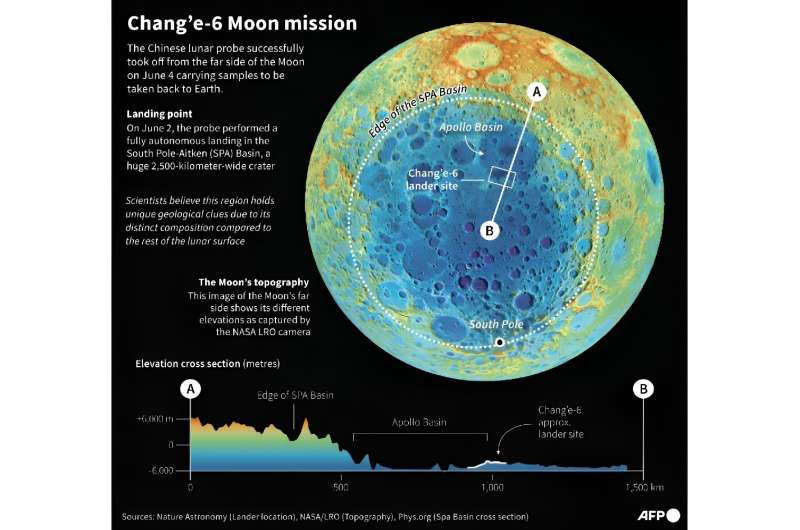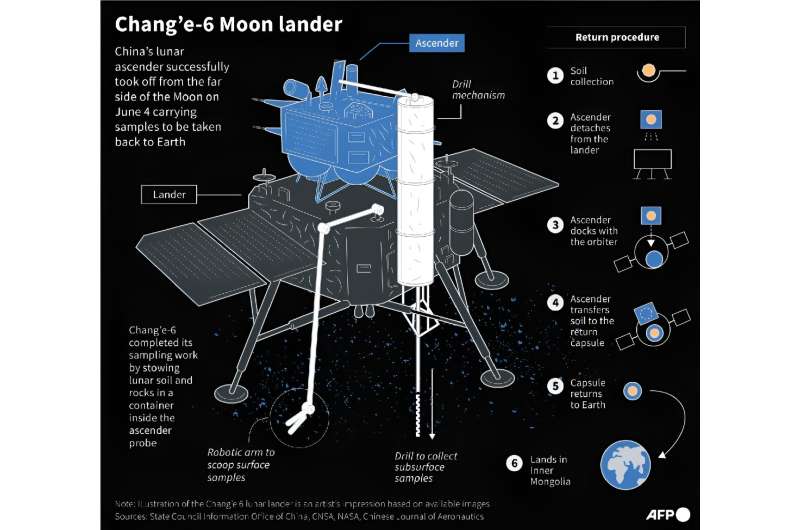This article has been reviewed according to Science X's editorial process and policies. Editors have highlighted the following attributes while ensuring the content's credibility:
fact-checked
reputable news agency
proofread
China lunar probe returns to Earth with samples

A Chinese probe carrying samples from the far side of the moon returned to Earth on Tuesday, capping a technically complex 53-day mission heralded as a world first.
The landing module of the Chang'e-6 spacecraft touched down at a predetermined site in Inner Mongolia at 2:07 pm (0607 GMT), the China National Space Administration said, hailing the mission a "complete success".
It comes bearing soil and rocks from the side of the moon facing away from Earth, a poorly understood region that scientists say holds great research promise because its rugged features are less smoothed over by ancient lava flows than the near side.
That means the materials harvested there may help us to better understand how the moon formed and how it has evolved over time.
China's space agency said the probe was "functioning normally, signaling that the Chang'e-6 lunar exploration mission was a complete success".
President Xi Jinping said in a congratulatory message that the "outstanding contributions" of the mission command "will be remembered forever by the motherland and the people", state broadcaster CCTV reported.
Chang'e-6 blasted off from a space center on the island province of Hainan on May 3 and descended into the moon's immense South Pole-Aitken Basin almost exactly a month later.
It used a drill and robotic arm to scoop up samples, snapped some shots of the pockmarked surface and planted a Chinese flag made from basalt in the gray soil.
On June 4, the probe made the first ever successful launch from the far side in what Xinhua called "an unprecedented feat in human lunar exploration history".

National pride, misinformation
China's burgeoning space exploits are a point of pride for the government, and state media outlets launched rolling coverage of the imminent landing on Tuesday morning.
Live images of the landing site showed workers approaching the landing capsule as several helicopters sat nearby on a broad patch of flat grassland.
One worker planted a Chinese flag next to the capsule, enthusiastically unfurling it into the wind.
Xinhua reported Monday that local farmers and animal herders had been evacuated from the area ahead of the touchdown.
"We hope that our country's space exploration will continue to advance and that our nation will become stronger," Uljii, a local herdsman, told Xinhua.
But the mission has also sparked a torrent of online misinformation, with some users of the Weibo social media platform seizing on the unfurling of the Chinese flag to push the false claim that Washington faked the Apollo moon landings, AFP Fact Check found.

'Space dream'
Plans for China's "space dream" have shifted into high gear under Xi.
Beijing has poured huge resources into its space program over the past decade, targeting ambitious undertakings in an effort to catch up to traditional space powers the United States and Russia.
It has built a space station, landed robotic rovers on Mars and the moon, and become only the third country to send astronauts into orbit.
But the United States has warned that China's space program masks military objectives and an effort to establish dominance in space.
China aims to send a crewed mission to the moon by 2030 and plans to eventually build a base on the lunar surface.
The United States also plans to put astronauts back on the moon by 2026 with its Artemis 3 mission.
© 2024 AFP




















